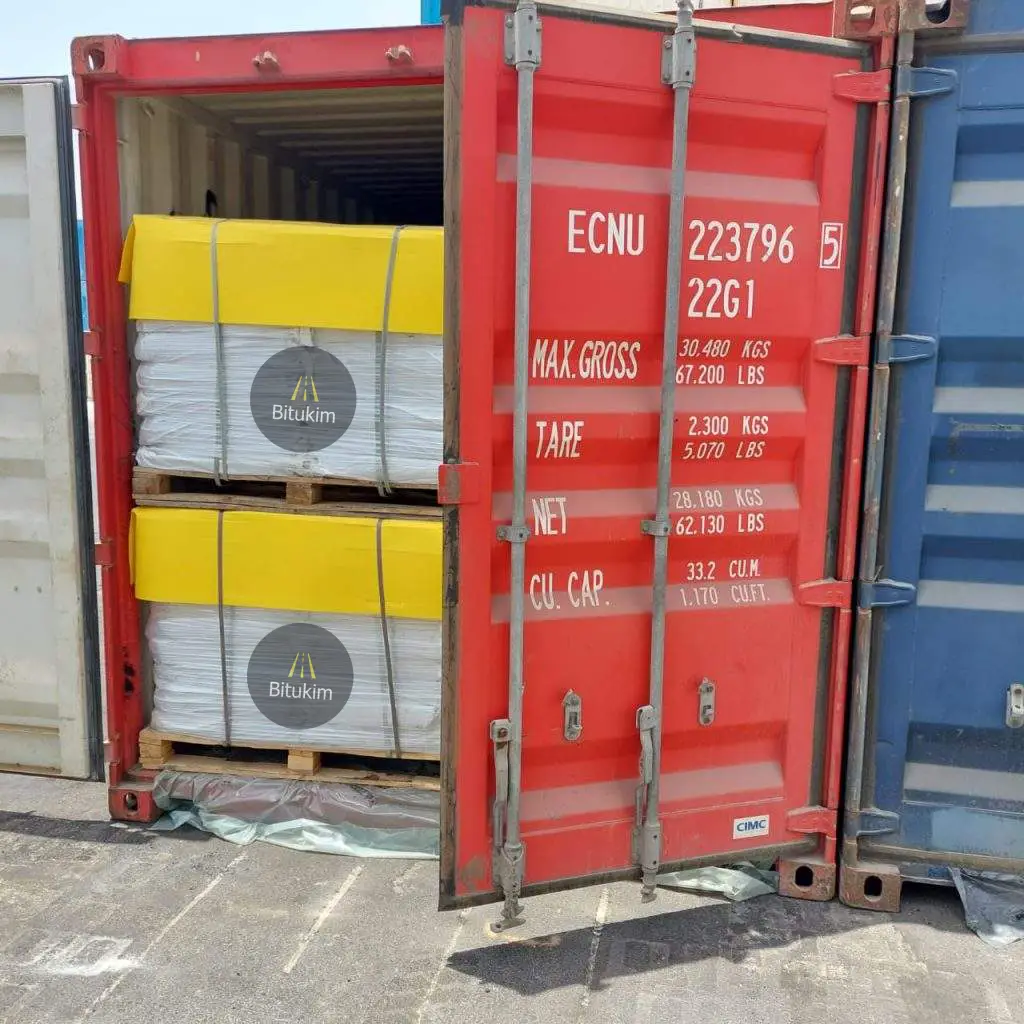
If you’re working on a construction project in the UAE’s demanding climate, you already know that ordinary materials won’t cut it. You need products engineered for performance and resilience. That’s where the search for a reliable oxidized bitumen 150/5 supplier begins.
At Bitukim, we understand that your reputation is built on the quality of your materials. As a leading manufacturer and supplier of blown asphalt in Dubai, we provide the high-grade oxidized bitumen 150/5 that contractors and engineers trust to stand up to extreme heat and challenging conditions.
This isn’t just another product; it’s a specifically engineered solution. Known for its impressive heat resistance (a softening point of 150°C) and solid structure, it’s the go-to choice for long-lasting infrastructure in the Middle East. (Contact Us)
Why is 150/5 the Preferred Grade for UAE Construction?
The process of creating this material is what sets it apart. We start with premium penetration-grade bitumen and carefully blow hot air through it. This oxidation process transforms it, making it harder, more thermally stable, and incredibly durable.
For a supplier, providing a product that consistently performs is key. That’s why our blown bitumen 150/5 is known for:
-
Superior Heat Resistance: It holds its own under the intense Gulf sun, preventing softening and melting.
-
Excellent Waterproofing Properties: It creates a formidable barrier against moisture, which is crucial for protecting structures.
-
Long-Term Durability: It resists aging and weathering, meaning structures need less maintenance over time.
-
Strong Adhesion: It bonds exceptionally well to surfaces like concrete, metal, and other common construction materials.
Key Specifications at a Glance
| Property | Typical Value | Why It Matters | Test Method |
|---|---|---|---|
| Softening Point | 145-155°C | Critical for high-temperature performance | ASTM D36 |
| Penetration Value | 4-6 (0.1 mm) | Indicates hardness and structural strength | ASTM D5 |
| Ductility | Low | Ideal for applications where rigidity is required | ASTM D113 |
Where Our Blown Asphalt 150/5 Makes a Difference
When you partner with a knowledgeable supplier, you get more than just a product; you get expertise. Our clients use our oxidized bitumen for a wide range of critical applications:
-
Roofing and Waterproofing Membranes: Creating robust, weatherproof layers for commercial and residential buildings.
-
Pipe Coating: Protecting underground and industrial pipelines from corrosion.
-
Pavement and Joint Sealing: Filling cracks in roads, runways, and bridges to prevent water ingress and damage.
-
Industrial Applications: Used as a modifier in paints, mastics, and undercoating for vehicles.
Bitukim’s Commitment: More Than Just Supply
Choosing the right oxidized bitumen 150/5 supplier is about reliability. Our clients choose us because we ensure:
-
Quality Assurance: Every batch is tested to comply with international ASTM standards.
-
Technical Support: We’re here to answer questions and provide guidance for your specific project needs.
-
Flexible Logistics: We offer various packaging options (25kg bags, boxes, blocks, drums) and can handle bulk orders with reliable shipping.
-
Local Presence: Based in Dubai, we understand the regional market and can deliver quickly and efficiently across the UAE.
A Quick Safety Note: Always handle hot material in a well-ventilated area using appropriate PPE (gloves, goggles). Full safety details are available on request.
Frequently Asked Questions for Buyers
Q: I need a material that can handle the summer heat. Is this it?
A: Absolutely. This grade was specifically designed for high-temperature environments like the UAE. Its high softening point means it remains stable and effective all summer long.
Q: How does oxidized bitumen differ from regular bitumen?
A: The blowing process makes it tougher and more heat-resistant. Think of regular bitumen as a viscous liquid and oxidized bitumen as a more solid, rubber-like material. It’s less ductile but far more rigid.
Q: Can you provide technical data sheets and certifications?
A: Yes, of course. As a professional supplier, we provide all necessary documentation, including ASTM test certificates and MSDS, to ensure your project compliance.
Q: How do I get a quote or check the current price?
A: Simply contact our team directly via phone or email. We’ll provide a prompt and competitive price quote based on your quantity and delivery location.
Ready to Buy Premium Oxidized Bitumen?
Your project deserves materials you can rely on. As a dedicated oxidized bitumen 150/5 supplier, Bitukim is committed to your success, providing the quality and support you need to build with confidence.
Contact us today for a quote, to discuss your needs, or to request a sample.
Bitukim – Your Partner in Quality Construction Materials.
Address: Dubai Office: No. 2305, Burlington Tower, Business Bay, Dubai, UAE
Phone: + (971) 4 566 4998
Mobile: +971 50 940 9246
Email: info@bitukim.com
Specification of Oxidized Bitumen 150/5 Dubai
The oxidized asphalt grade 150/5 means the softening point is 150°c and penetration is 5 desi millimeters is produced in compliance and conformity to ASTM standards and meets the following specifications:
| Bitumen 150/5 | Test method | Unit | Specification |
|---|---|---|---|
| Specific gravity @25/25 C | ASTM D70 | (Kg/m3) | 1.05 approx. |
| Penetration @ 25°c | ASTM D5 | mm/10 | 4/6 |
| Softening point °c | ASTM D36 | °C | 145/155 |
| Ductility @25 °c | ASTM D113 | Cm | 1.5min |
| Loss on heating(wt) % | ASTM D6 | Wt. % | 0.2 max |
| Flashpoint c | ASTM D92 | °C | 250 min |
| Solubility is CS2(wt) % | ASTM D4 | Wt. % | 99.5 max |
| Spot test | A.A.S.H.O.T102 | — | Negative |
If you are more interested in product information or need to place an order, contact or inquire about our Sales team.

